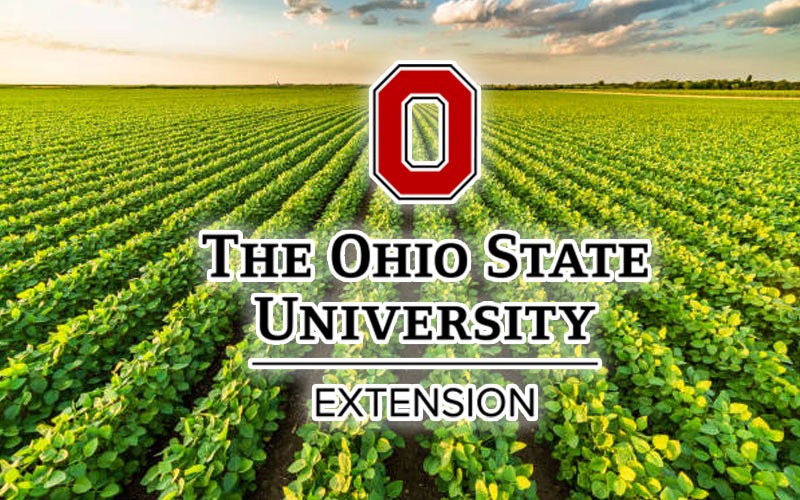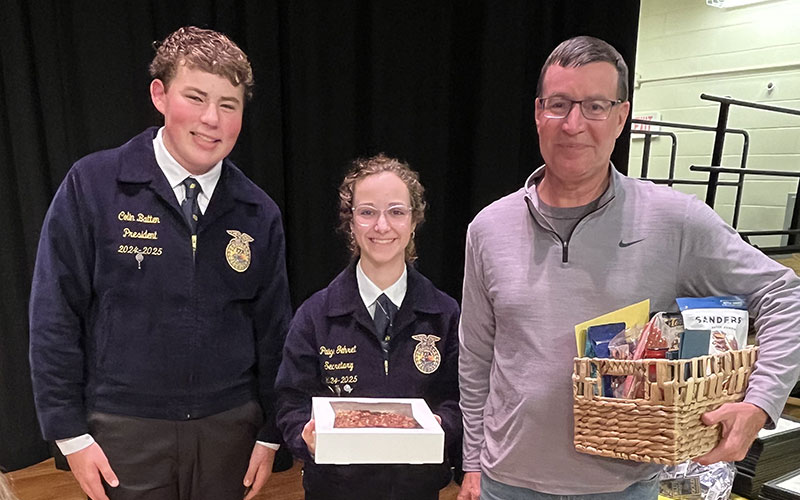
by CrownRandall | Nov 24, 2024 | Agriculture
The major weather story of 2024 has been the drought conditions that began back in June and persisted throughout the summer and fall. This was capped off by this October ranking as the 7th driest October on record for Ohio (1895-2024), with 2024 year-to-date ranking as the warmest year for Ohio so far. However, conditions have finally started to moisten up over the last few weeks. OSU Extension Specialist Aaron Wilson provides a weather update, including the latest information on temperature
re and precipitation, as well as what to expect in the upcoming days. https://agcrops.osu.edu/newsletter/corn-newsletter/2024-40/drought-slowly-eases-across-state
Take me back to the homepage

by CrownRandall | Nov 24, 2024 | Agriculture
Trusts are often an important component of a farm succession plan. But there are two primary different types of trust – revocable and irrevocable. A revocable trust often meets most needs and can be the preferred choice for flexibility. However, in cases where enhanced asset protection or estate tax management is necessary, an irrevocable trust may be more suitable.
Farm business management can be a complicated topic that is made much easier by informative bulletins. This article from Robert Moore introduces a new OSU Extension Bulletin on the topic of revocable and irrevocable trusts in farm succession planning. Moore also discusses several upcoming workshops on the topic of “Planning the Future of Your Farm”. https://farmoffice.osu.edu/blog/thu-11142024-651pm/new-publication-explains-trusts
Take me back to the homepage

by CrownRandall | Nov 24, 2024 | Agriculture
Drought conditions have affected most of Ohio at one point or more this summer and fall, and we need to consider the long-term effects that this could have on forages… While getting livestock through the winter is the main goal right now, we need to start looking at what will need to be done with pastures and hayfields.
As we continue to feel the effects of drought on our crops and livestock, its important to think about the long-term success of our forages. OSU Extension Educator Jordan Penrose shares some methods that can be used to improve forage stands. Frost seeding, interseeding, and complete renovation are three practices discussed in this article to improve your pastures and hayfields after severely dry weather. https://u.osu.edu/beef/2024/11/20/drought-damaged-pasture-whats-next/
Take me back to the homepage

by CrownRandall | Nov 24, 2024 | Agriculture
Episode 4 of OSU Extension’s Green Fields Green Dollars series is now live on YouTube! The newest episode of the series features Greg LaBarge, field specialist in agronomic systems, who talks with Rachel and Clint about Nitrogen timing and economics. They discuss trends in the region, along with benefits and challenges of different N application timing.
Making nutrient management choices can be complicated, and it can be difficult to make the most profitable decisions. The latest “Green Fields Green Dollars” episode provides information to make those decisions easier for you. https://agcrops.osu.edu/newsletter/corn-newsletter/2024-40/episode-4-green-fields-green-dollars-dive-nitrogen-economics
Take me back to the homepage

by CrownRandall | Nov 24, 2024 | Agriculture
Individuals looking to become a Certified Crop Adviser (CCA) should consider attending the Ohio CCA Pre-Exam Preparation Class offered by Ohio State University Extension. The session will be January 7-8, 2025, at the Shelby County Ag Building, 810-820 Fair Rd, Sidney, Ohio 45365.
For those interested in taking the Certified Crop Adviser Exam should consider attending the pre-exam prep class offered in neighboring Shelby County. More details and information to register can be found in the article. https://agcrops.osu.edu/newsletter/corn-newsletter/2024-40/certified-crop-adviser-exam-preparation-class
Take me back to the homepage

by CrownRandall | Nov 24, 2024 | Agriculture
VERSAILLES – On Monday, November 18th, Versailles FFA held their monthly meeting, and 55 first-year members received their Greenhand FFA Degree. Versailles FFA also awarded Rusty and Carey Reese the honorary Greenhand FFA Degree in memory of the late Wyatt Reese who was scheduled to be a new Greenhand FFA member at the start of school. The Versailles FFA also awarded the Reese family a FFA emblem pillow in loving memory of Wyatt.
In addition at the meeting Versailles FFA Chapter recognized Ken Moorman for his years of service to Versailles Schools and presented Ken with a retirement gift as a thank you for his support and help towards the Versailles FFA. Anna Moeller, the Ohio FFA State President gave an inspirational message to the greehands and guests in attendance.
To be eligible for the FFA Greenhand Degree members must meet the following requirement qualifications: be in their first year of agriculture education, know the FFA creed and motto, understand the code of ethics, know how to properly wear the FFA jacket, know the meaning of the FFA emblem and colors, know about the organizations history and have a plan for their SAE. Recipients of the Greenhand FFA Degree include: Laylah Adkins, Lydia Ahrns, Averi Ahrns, Allie Bergman, Allison Bergman, Ian Bergman, Kaden Bergman, Kyra Bergman, Cole Billenstein, Kacey Borchers, Blaize Brandewie, Lydia Breeze, Hannah Brewer, Simon Broering, Frankie Broerman, Chloe Brown, Gage Brunswick, Levi Dirksen, Arian Drees, Jacob Dues, Miles Garber, Jayna Gehret, Caiden Green, Elizabeth Grieshop, Isabel Grisez, Karly Happy, Noah Hayes, Dalton Johns, Ben Kaiser, Maverick Keller, Aleta Longfellow, Gabe McGlinch, Annalee Mertz, Jocelyn Mumaw, Vera Pearson, Kayle Petitjean, Kolt Petitjean, Cadence Philpot, Kenley Philpot, Blake Pitsenbarger, Noah Rhoades, Elizabeth Ruhenkamp, Blair Schellhase, Ceclila Schmitmeyer, Monica Schmitmeyer, Sam Schmitmeyer, Thersea Schmitmeyer, Alex Selhorst, Seth Shafer, Zach Shimp, Garrett Thompson, Evan Weaver, Symone Werkamp, Abby Wilker, Liam Wilson, and Russell Winner.
In addition to the ceremony, several Versailles FFA members recited the FFA creed as part of the ceremony they included: Lydia Breeze, Elizabeth Grieshop, Blair Schellhase, Blake Pitsenbarger, and Cecilia Schmitmeyer. The meeting ended with pumpkin desserts, apples and caramel, and cider that was served.
Congratulations to all the Greenhand Degree Recipients and thank you to Mr Moorman for his years of service to Versailles Schools.
Take me back to the homepage


